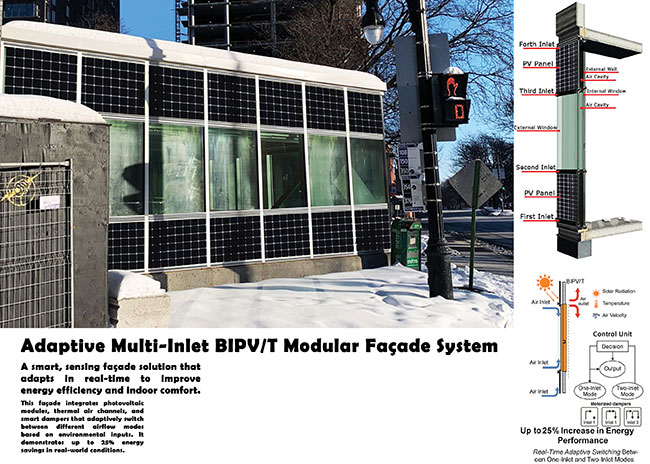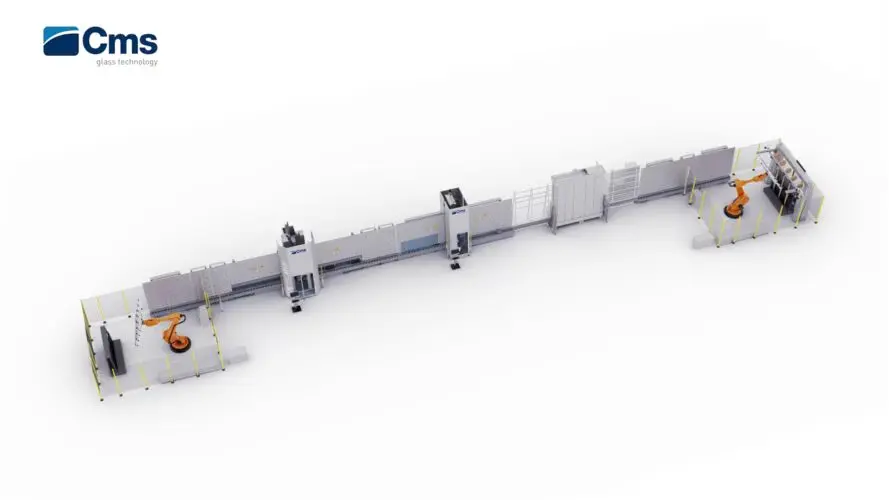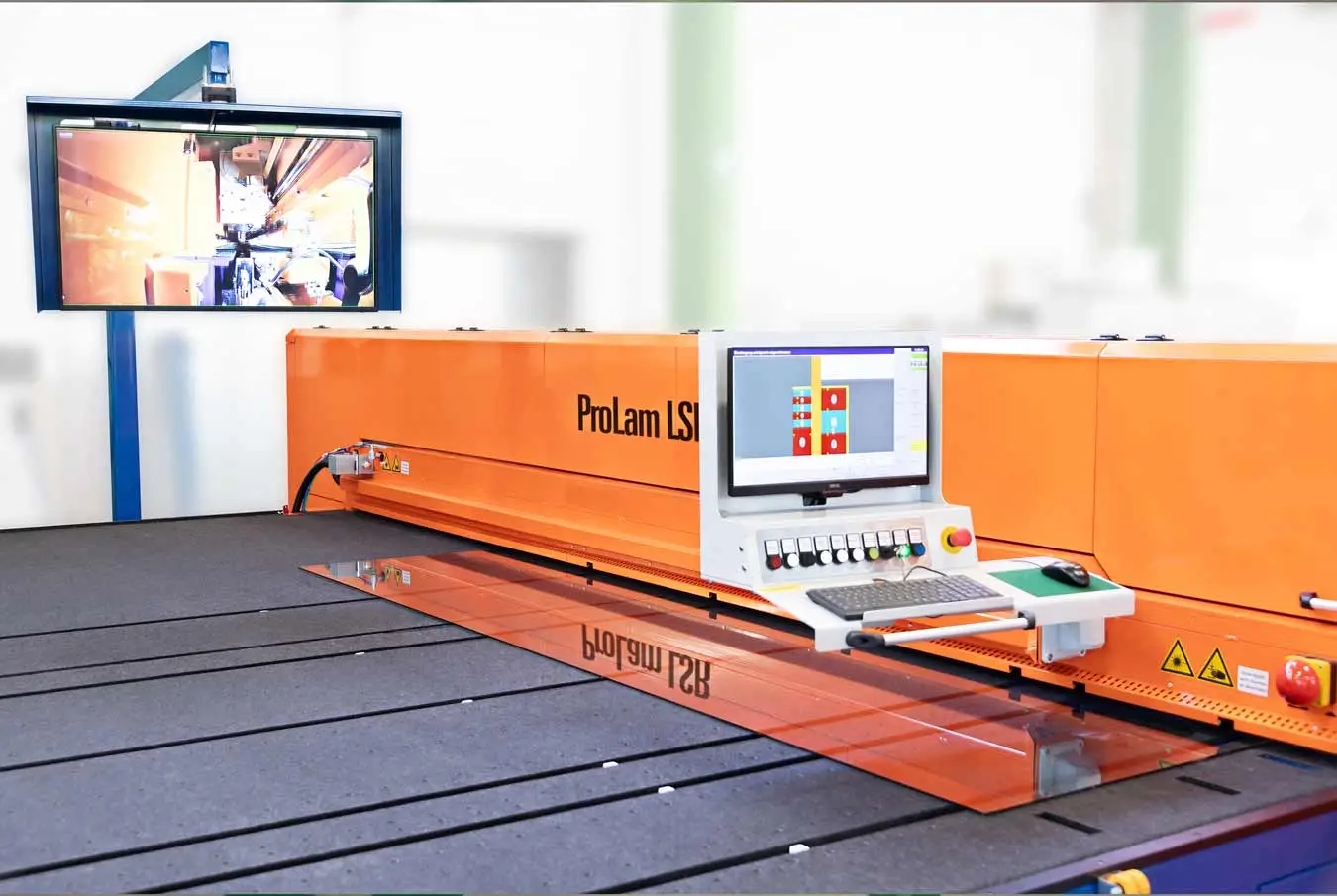Researchers at Concordia University in Montreal have developed an adaptive BIPV/T (building-integrated photovoltaic/thermal) curtainwall that actively produces energy while enhancing indoor comfort. Unlike conventional facades, it integrates semitransparent photovoltaic modules, a thermal air channel, four controllable air inlets, and two operable dampers, all managed by an intelligent control system. The facade continuously monitors outdoor temperature, solar radiation, and building thermal demand, dynamically switching between single- and dual-inlet operation to optimize electricity and heat production.
In winter, it prioritizes heat extraction, preheating ventilation air for the HVAC system and reducing space heating loads. In summer, it acts as a ventilated cooling facade, lowering PV panel temperatures to improve electrical conversion efficiency while limiting solar heat gain indoors. When energy production is unnecessary, the system switches to thermal buffer mode, reducing heat loss through the envelope.

Designed for modular prefabrication, each unit uses aluminum framing, operable dampers, and factory-assembled PV glazing, allowing plug-and-play installation with conventional curtainwall techniques. Simulation studies with Canadian climate data show energy yields 2–25% higher than standard BIPV/T systems, particularly under low-irradiance winter conditions.
By combining smart thermal and electrical management with scalable modular design, this adaptive curtainwall offers a practical, climate-responsive solution for net-zero-ready buildings and retrofits, positioning Canada as a leader in energy-active facade technologies.
Source: GlassCanadaMag with additional information added by Glass Balkan







